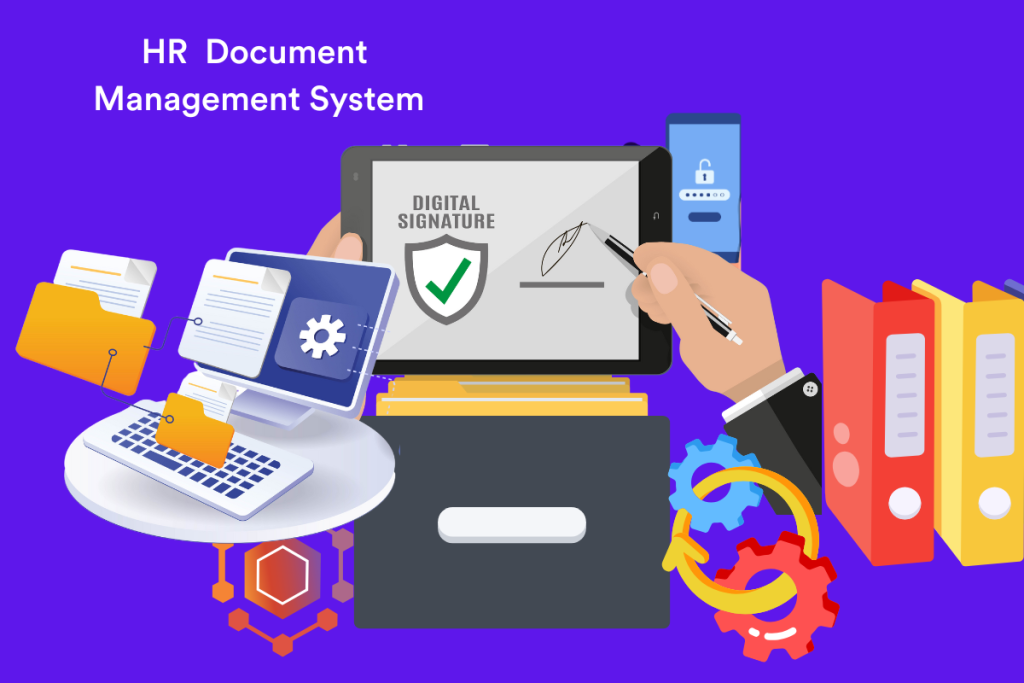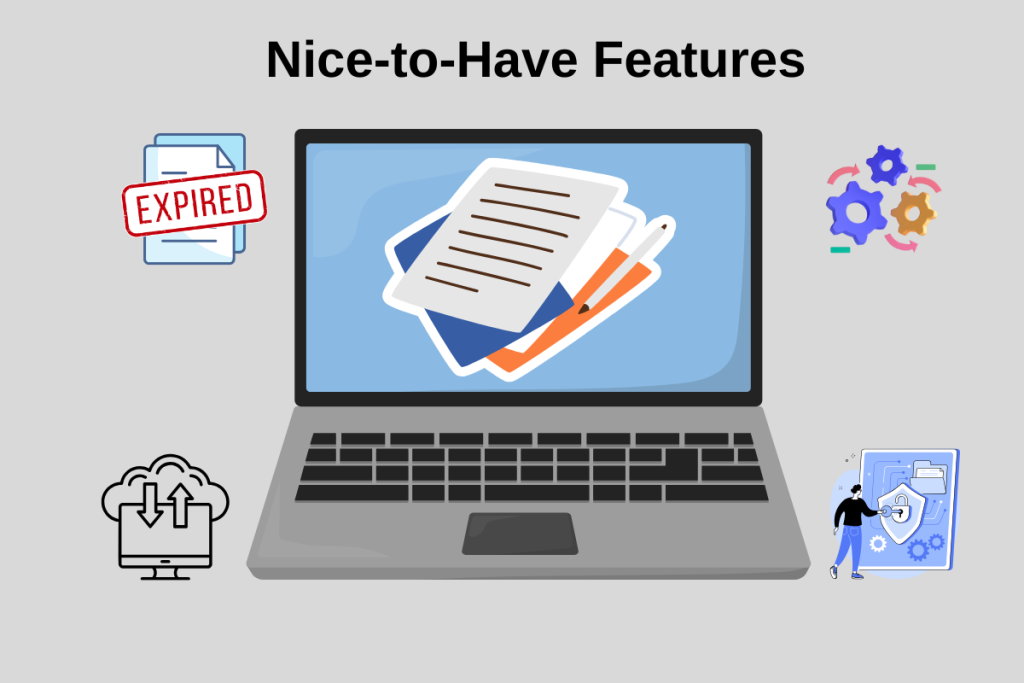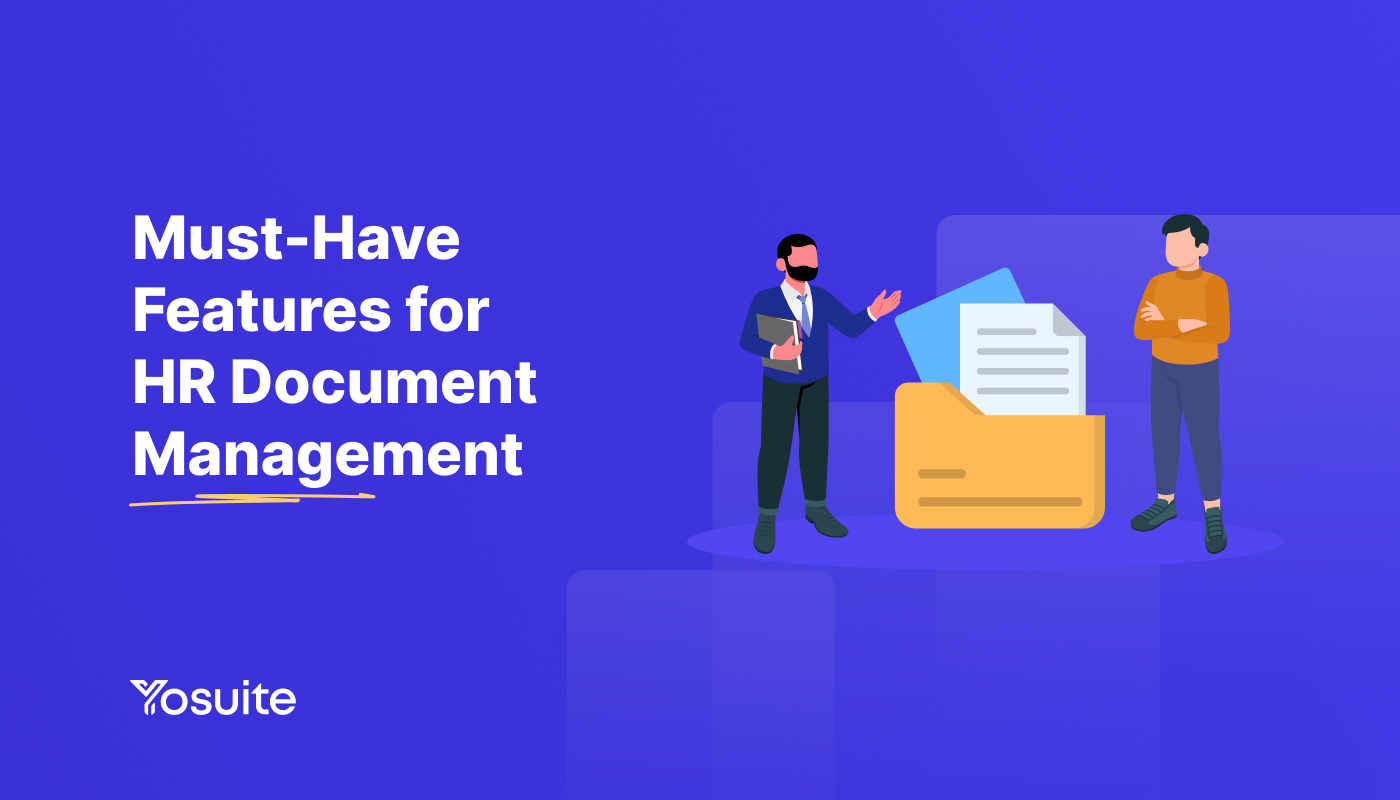For various tasks like recruiting, employee onboarding, performance management, and compliance, knowing the must-have features for HR Document Management is crucial. But how much do you know about these features?
Below, we will explore the must-have features that every HR document management system should include to enhance productivity, streamline workflows, and ensure compliance. So, let’s start the journey.
Table of Contents
What is an HR Document Management System?
An HR Document Management System (HR DMS) is a tool developed to help HR personnel efficiently store, organize, and manage HR and other related documents. It centralizes all HR-related paperwork, from employee contracts and onboarding documents to performance reviews and compliance forms, making the materials easily accessible and secure.
This system plays a vital role in reducing the reliance on paper-based processes, enhancing document security, and ensuring compliance with legal regulations.
Imagine a company onboarding 10 new employees at the same time. Without an HR DMS, the HR team would need to handle a huge amount of paperwork manually — including offer letters, contract letters, tax forms, and policy documents.
It’s a time-consuming process that involves printing, signing, scanning, and filing documents. With an HR DMS, the entire process can be streamlined. The system can send automated onboarding packages, allow digital signatures, and store completed documents in a centralized repository that’s accessible to both HR and new hires.
Features of HR Document Management
So, now we will go over 10 must-have features for your HR document management system. Without these features, your system would not perform at optimum levels. And, your HR document will remain manual and traditional.
Automated Document Workflows
According to a survey, 65% of employees face challenges when reviewing and approving documents.
Manual document handling can lead to errors and delays, negatively impacting HR processes. Automated document workflows help eliminate repetitive tasks and improve your document management operations.
With automated workflows, documents like offer letters, non-disclosure agreements (NDAs), handover-takeover forms, leave applications, and performance reviews can be routed automatically to the right authority for approval.
Automated workflows help to:
- Increase efficiency by reducing manual work and speeding up document processing.
- Minimize human errors through standardized processes.
- Ensure that documents follow the correct procedures for approval and storage.
However, you should also make sure that the workflows are configurable and you are not limited to specific documents.
Digital Signature Integration
Gone are the days of printing, signing, and scanning documents. Digital signatures offer a quick and efficient way to sign HR documents quickly and securely. Integrating digital signature capabilities into your HR DMS simplifies the process of obtaining legally binding approvals.
For instance, GoCo’s HR Electronic Signature lets you easily collect electronic signatures and send secure links to new hires for signature capture.
The positive effects that digital signature creates are:
- It saves time and speeds up the signing process by enabling remote approval.
- Enhanced Security that provides a tamper-proof way to sign documents.
- Legal Compliance helps to meet legal requirements for electronic signatures in most jurisdictions.
Secure Cloud Storage
Data security is a top priority for HR departments dealing with sensitive employee information. Having secure cloud storage ensures that all documents are stored safely and are easily accessible from anywhere, at any time.
Tools like BrightHR help save time by uploading HR documents in bulk to a secure system, from anywhere, at any time.
With a secure cloud storage, you can:
- Protect documents with encryption and secure access controls.
- Easily accommodate growing data needs without additional hardware.
- Ensure reliable backups in case of data loss.
Compliance Management Tools
Compliance is a crucial aspect of HR document management, especially with strict regulations like GDPR, HIPAA, and SOC 2. Compliance management tools help ensure that your HR documents meet legal and regulatory requirements, reducing the risk of costly fines.
Let’s say, all new employees are required to fill out a Form I-9 attesting their authorization to work in the U.S. and provide documentation proving their identity and authorization to work, this aspect needs to be included in the document management system. Or, both the employer and employee will face legal issues when an HR audit takes place.
Integrating compliance management features helps to:
- Track document handling and access to maintain compliance records.
- Secure sensitive employee information.
- Minimize the risk of non-compliance with regulatory standards.

Employee Self-Service Portal
An employee self-service portal empowers staff to access and manage their documents independently, reducing the burden on HR teams. Employees can view their pay slips, update personal information, and access important documents, all from a single platform.
Automated HR tools like Paylocity provide employee self-service portal features that let employees simply do the basics like request time off and clock in by themselves, with 24/7 access. This takes some of the burden off HR.
This feature helps to:
- Improve employee experience through a user-friendly interface for accessing documents.
- Reduces HR Workload of handling document requests.
- Ensures employees can quickly retrieve necessary documents.
Centralized Document Repository
A centralized document repository serves as the backbone of any effective HR document management system. It lets all HR documents be stored, organized, and retrieved from a single location, ensuring consistency and easy access.
A popular software, Zoho People, offers storing and sorting of documents related to onboarding, exit interviews, recruitment, performance management, etc. You can easily organize your documents, create folders for internal resources, and share confidential files, all from a single point.
So, what are the benefits of having a central document repository?
- Keeps all documents in one place for better organization.
- Makes searching for specific documents fast and efficient.
- Controls access to sensitive documents based on user roles.
HRIS Integration
One major feature of your HR document management system is its ability to Integrate with an HRIS (Human Resource Information System). This ensures smooth data flow and reduces data duplication.
This integration can synchronize employee data and automate document generation, making HR processes more efficient. The HRIS may be developed or customized by your firm or outsourced from outside.
The integration will ensure:
- That employee information is up-to-date across systems.
- Manual Work is reduced and Automated for the creation and updating of HR documents.
- Better insights through consolidated data.
Mobile Access for HR Documents
With remote and hybrid work becoming more common, mobile access to HR documents is a must-have feature. Employees and HR teams should be able to view, edit, and share documents securely from their mobile devices.
With companies recruiting cross-national teams and onboarding clients across different regions, accessing HR documents via mobile devices has become crucial.
Mobile accessibility:
- Enables access to documents anytime, anywhere.
- Allows HR tasks to be completed on the go.
- Offers a convenient and mobile-friendly interface.
Document Collaboration Tools
Collaborative document tools are essential for HR teams working on projects like policy updates or performance reviews. These tools allow multiple users to work on the same document simultaneously, making it easier to gather feedback and finalize documents.
An example would be HR personnel located at different locations of a large enterprise. For the spread-out HR teams, communicating and sharing documents via email would become a hassle unless there is a feature in the HR DMS that lets them share docs from one platform.
The collaboration tool would ensure:
- Real-Time Collaboration where multiple users can edit and comment on documents.
- Version Control which would track changes and maintain document history.
- Streamlined Feedback that would simplify the review process with built-in features.
Multi-Language Document Support
Global companies need HR document management systems that support multiple languages. This feature is especially important for organizations with diverse workforces or those operating in different countries.
For example, a Chinese employee will prefer a code of conduct (COC) drafted in his/her local language rather than English. This not only makes communication easier but also motivates the non-English employee to work better.
The benefits you get from this feature are:
- Improved Accessibility of documents in an employee’s preferred language.
- Assurance that localized documents meet regional legal requirements.
- Reduction of language barriers within the organization.
4 Nice-to-Have Features for HR Document Management

In addition to the essential features, certain enhancements can greatly boost the efficiency and security of an HR document management system. Here are four valuable “nice-to-have” features that can elevate your HR processes.
Document Expiry Reminders
This is a helpful feature that automatically notifies HR teams when important documents like contracts, certifications, or compliance forms are nearing their expiration date. This automation reduces the need for manual tracking, helps maintain regulatory compliance, and ensures that no critical document lapses go unnoticed, mitigating risks and keeping processes on track.
Role-Based Access Permissions
Through this feature, you can enhance the security of sensitive HR data by allowing system administrators to control document access based on user roles. For instance, only HR managers may access confidential salary data, while general HR staff might have permission to view onboarding documents. This feature helps protect sensitive information, supports data privacy regulations, and prevents unauthorized access or accidental data exposure.
Automated Retention Policies
Now these types of policies are vital for managing the lifecycle of HR documents, automatically archiving or deleting files according to preset rules. This feature ensures that documents are stored only as long as necessary, reducing storage costs and helping the organization stay compliant with data protection regulations.
By automating retention, HR teams can avoid the pitfalls of keeping outdated documents that may pose legal risks.
Version Control System
This is a powerful tool that tracks changes made to documents, allowing users to access previous versions if needed. This feature is particularly essential for collaborative projects like policy updates or performance reviews, where multiple stakeholders may be making edits.
Version control provides a clear history of document changes, enhances transparency, and prevents confusion by ensuring that users can always revert to an earlier version if necessary.
Incorporating these nice-to-have features for HR document tracking can streamline HR processes, improve data security, and enhance compliance, providing an additional layer of efficiency and reliability to your HR document management system.
To Sum Up
A robust HR document management system is crucial for optimizing HR processes and ensuring compliance with legal and regulatory requirements.
By leveraging features such as secure cloud storage, compliance management tools, employee self-service portals, centralized document repositories, and others mentioned above, organizations can enhance HR document management, improve efficiency, and enhance employee satisfaction.
Implementing a comprehensive HR document management system is an investment that pays off in terms of improved efficiency, reduced risk, and increased productivity. So, you should not miss out on this!

Leave a Reply